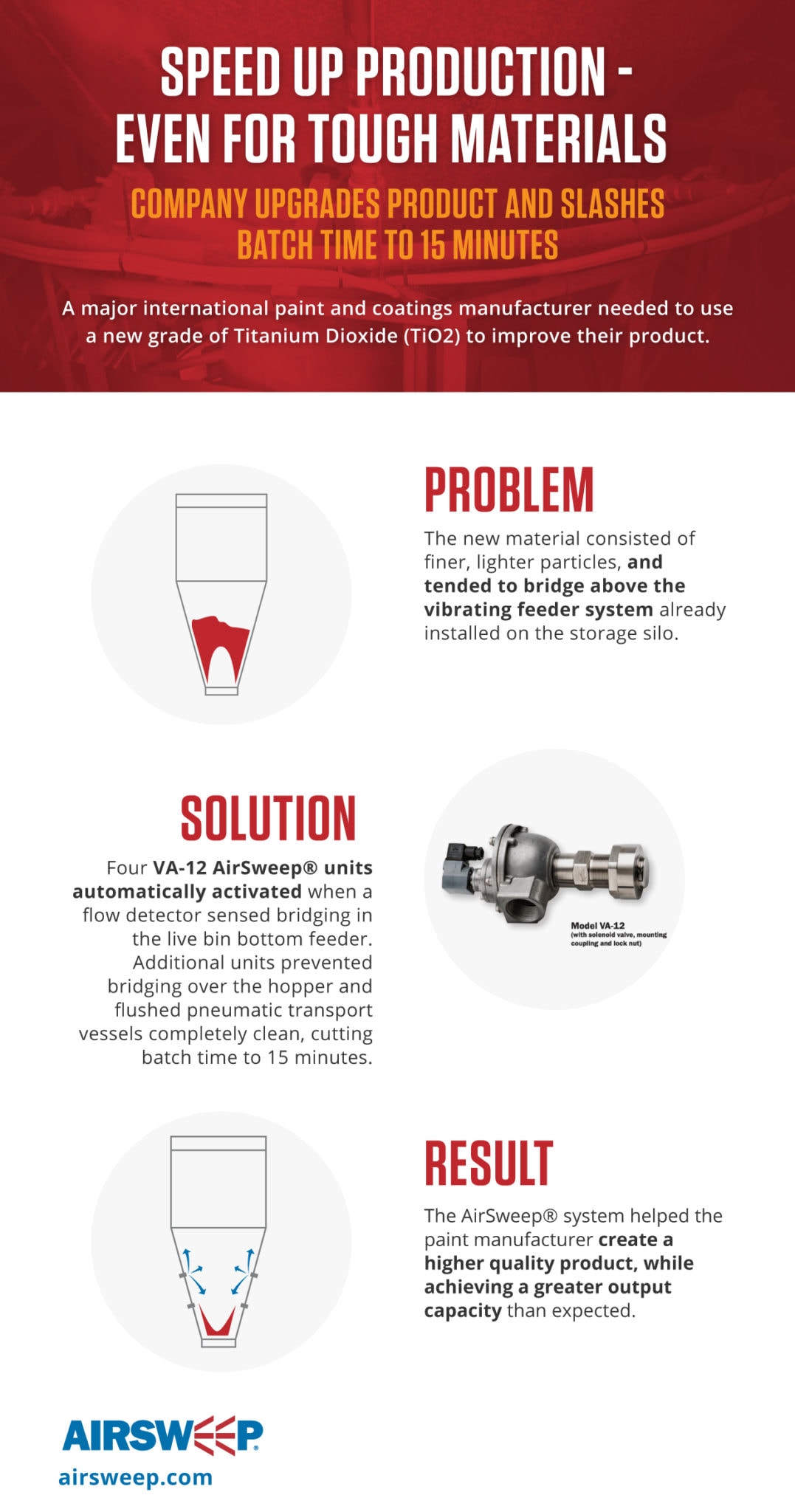AirSweep System Fixes Several Flow Issues Along Titanium Dioxide Processing Network
AirSweep® boosts productivity and cuts batch time to 15 minutes
In an effort to produce a better quality product, a major international paint and coatings manufacturer needed to use a new grade of Titanium Dioxide (TiO2). A test of the material showed that the new grade of TiO2 presented flow problems not previously encountered with the existing grade.

Problem
The new material consisted of finer, lighter particles, and tended to bridge above the vibrating feeder system already installed on the storage silo.
Solution
To correct the problem, the company replaced the feeder with a live bin bottom (multiple screw feeder) and installed a ring of four Model VA-12 AirSweep units about 2 feet above the live bottom. These were automatically activated when a flow detector sensed bridging above the live bottom.
The flow of TiO2 from the live bottom system was now feeding beyond the capacity of the system’s screw conveyor. A collection hopper was put into service as a buffer hopper to feed the screw but the material would immediately bridge above the 10″ diameter outlet. This was solved by installing an additional four VA-12 AirSweep units on the buffer hopper.
The new grade of TiO2 also caused flow problems in the pneumatic transport vessel. The material proved difficult to aerate and the vessel would not completely empty during the batch cycle. In order to completely empty the vessel, the transport cycle needed to be activated two or three more times, taking up to 50 minutes to transport the entire batch over a distance of 325 feet. After installing four VA-12 AirSweep® units, the pneumatic transport vessel completely emptied in only one cycle, cutting the batch time to only 15 minutes.
Results
The AirSweep system helped the paint manufacturer create a higher quality product, while achieving a greater output capacity than expected.




